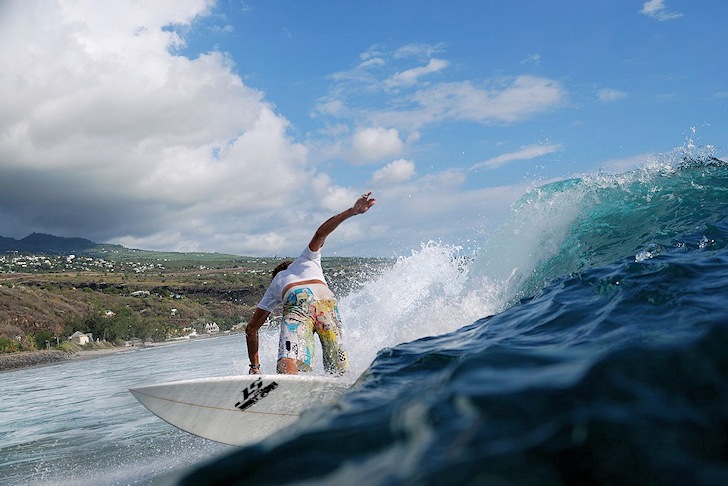Réunion is an overseas territory of France. The volcanic island is located in the Indian Ocean, bordered to the west by Madagascar and to the northeast by Mauritius.
With a total area of 2,512 square kilometers and a 207-kilometer long coastline, Réunion offers a breathtaking wild landscape and good surfing conditions.
The climate is tropical, with warm temperatures throughout the year, especially in the coastal areas.
The topography of the island leads to some microclimates, and temperatures decrease progressively towards the inland and higher areas.
There are two main seasons: warm and humid, between November and April, and cooler and dry, from May to October.
The average temperature in the capital city, Saint-Denis, varies between 24 ºC in August and 30 ºC in February.
Rain falls more intensely, in short, heavy showers, between January and February, and it’s more prevalent on the east coast than on the western side.
The cyclone season happens during the moist and warm period, between November and April. East and southeastern winds are prevailing on the island.
The Reunion Island receives powerful and consistent Roaring Forties swells that circulate around South Africa. Expect coral reefs and lava rock bottoms.
The real downside is sharks, so avoid catching waves in murky waters, before dark or after heavy rains.
The surfing season starts in April and ends in September. You won't need a wetsuit, and SE trade winds are constantly blowing.
The best surf spots are located in West Réunion. There will be plenty of waves between Le Port and Saint-Pierre. That's 65 kilometers (40 miles).
Saint-Leu is probably one of the best surf spots on Reunion Island. An endless left-hander, with a few dangerous coral heads that emerge in low tide.
Near Saint-Paul, look for Cap Requin, Boucan, Aigrettes, Roches-Noires, La Digue, L'Hermitage Pass and Trois-Bassins.
In the Saint-Leu region, go for La Caffrine, La Pointe-Au-Sel and Etang-Salé. In Saint-Pierre, find Pic Du Diable and Le Jetty.
